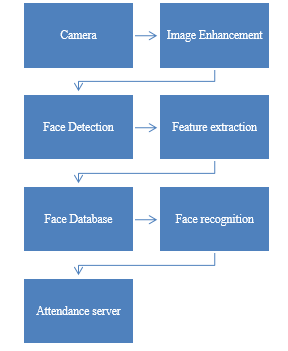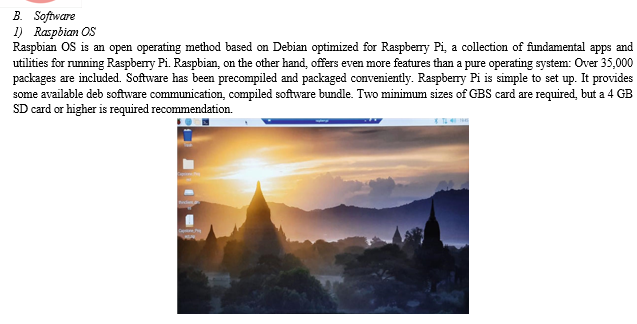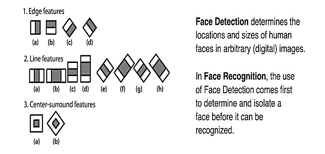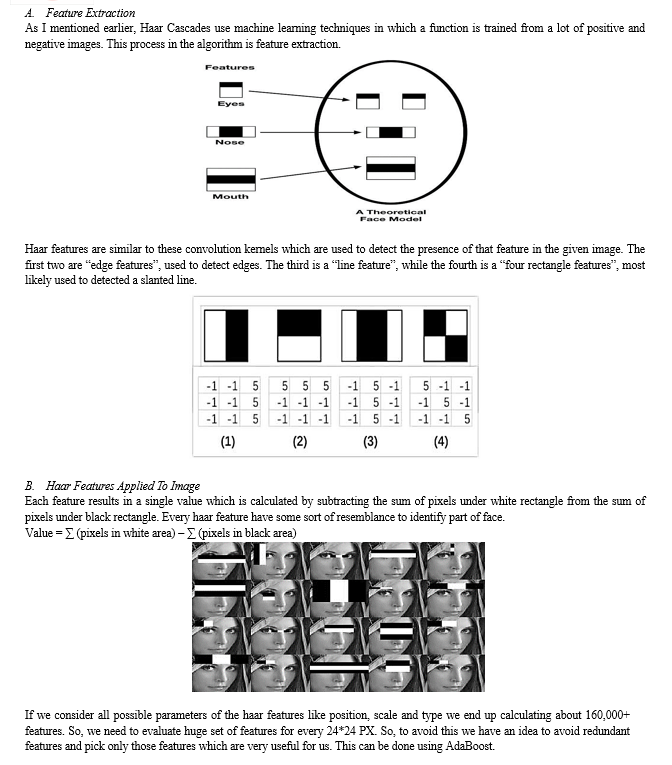Ijraset Journal For Research in Applied Science and Engineering Technology
- Home / Ijraset
- On This Page
- Abstract
- Introduction
- Conclusion
- References
- Copyright
Face Recognition Based Attendance System
Authors: Sejal Shinde, Rutuja Shinde, Pramod Muchwad, Aniket Nagargoje , Ms. Nancy Kumari
DOI Link: https://doi.org/10.22214/ijraset.2024.60784
Certificate: View Certificate
Abstract
In the field of image analysis and computer vision, one of the most arduous tasks presently considered is Face recognition. The biometric system which basically works on the principle of face recognition is used for the identification or verification of a person from a digitalized image preferably used in surveillance, security and attendance purpose. Face Recognition is becoming more popular than other biometric verification methods due to its simplicity, non-invasiveness, and lack of touch. The system’s major goal is to identify and recognize faces in a real-time environment, match them with data in the database, and record their attendance. This is intended to make the time-consuming manual attendance process more efficient. The main building block on which all automated systems concerned with human faces are designed is face detection. In many person-system user interfaces, precise face identification is important; the real implication is the precise approach to face identification.
Introduction
I. INTRODUTION
There is an inherent positive relationship between students’ attendance in schools and colleges and their academic performance in order to maintain this relationship, it is necessary to encourage their presence and performance in the classrooms, so that students are motivated to keep up with the progress of the subjects being taught in class, thereby increasing their participation in school/college.
Attendance management systems have been implemented in schools, colleges, and universities all over the world using a variety of methods[1].
Traditional method of attendance marking is a tedious task in many schools and colleges. It is also an extra burden to the faculties who should mark attendance by manually calling the names of students which might take about 5 minutes of entire session. This is time consuming.
There are some chances of proxy attendance. Therefore, many institutes started deploying many other techniques for recording attendance like use of Radio Frequency Identification (RFID), iris recognition, fingerprint recognition, and so on [2].
The process through which we can recognize a face, involves certain steps that has to be mandatorily followed to get the desired output.
The steps are as follows, firstly it begins with collecting the strong data sets for the students in the class, followed by training them with a good model, later on detecting the faces with a good model at the time of actual attendance, then feature extraction, classification of the data acquired and recognition of faces, ending it by transferring the faces recognized to a excel sheet[3].
Human face plays an important role in our day to day life mostly for identification of a person. Face recognition is a part of biometric identification that extracts the facial features of a face, and then stores it as a unique face print to uniquely recognize a person. Biometric face recognition technology has gained the attention of many researchers because of its wide application [4].
Face detection is a system in which, using an algorithm, an input image is analysed to determine the part(s) of the image contains a human face.
In conjunction with face tracking, gesture recognition and individual popularity, a lot of person-system interface (HMI) work may be effective and appropriate for proper initialization.[5]
II. BLOCK DIAGRAM

III. METHODOLOGY
A face recognition-based attendance system using Raspberry Pi, camera, dataset, I2C module, and LCD display is a system that can automatically identify and record the attendance of individuals based on their facial features. The system works by first capturing a video stream from the camera. The video stream is then processed by the Raspberry Pi using a face recognition algorithm to identify the individuals in the video. Once the individuals have been identified, their attendance is recorded to a database. The I2C module is used to connect the LCD display to the Raspberry Pi. The LCD display is used to display the attendance records of the individuals.
A. Here is a more detailed overview of the system:
- Hardware
- Raspberry Pi
- Camera
- I2C module
- LCD display
- Software
- Face recognition algorithm
- Database
- Programming language (e.g., Python)
Steps
a. Capture a video stream from the camera.
b. Use a face recognition algorithm to identify the individuals in the video stream.
c. Record the attendance of the identified individuals to a database.
Display the attendance records of the individuals on the LCD display.
B. I2C Module
The I2C module is used to connect the LCD display to the Raspberry Pi. I2C is a serial communication protocol that allows devices to communicate with each other using only two wires. This makes it ideal for connecting devices to the Raspberry Pi, which has limited GPIO pins.
C. LCD Display
The LCD display is used to display the attendance records of the individuals. LCD displays are relatively inexpensive and easy to use, making them ideal for this type of application.
IV. HARDWARE AND SOFTWARE DISCRIPTION:
A. Hardware
1) Raspberry Pi 4B Board
Raspberry Pi 4B Board Around the world, people use the Raspberry Pi to learn programming skills, build hardware projects, perform home automation, implement Kubernetes clusters and edge computing, and even use it in industrial applications; the Raspberry Pi is a very cheap computer running Linux, but it also offers a set of GPIOs. Raspberry Pi 4 has three different versions 1, 2, or 4 GB of ram; it uses a USB-C power supply, unlike its predecessor. Compared to its predecessor, it has altered positions of USB ports. It has the same form factor compared to the before model. Raspberry Pi 4B is based on a Broadcom BCM 2711 system on a chip with a 64bit quadcore arm cortex A72 CPU running at 1.5GHZ; it has some good wireless connectivity. It got a dual-band 802 1-1 BG and an AC WIFI and Bluetooth 5.0, and first time on the raspberry Pi, we have Gigabit Ethernet and 2 USB 2.0 PORTS AND 2 USB 3.0 PORTS. It has dual 4 k MICRO-HDMI sockets, and it can support 4 k video up to 60 frames/sec. It has 40 GPIO pin connectors. It has a micro-SD card slot.


2) Open CV
Open CV is a cross-platform library that allows you to develop real-time computer vision applications. The main focus is on image processing, video capture, and analysis, including features such as face detection and object detection. Computer vision can be defined as an area that describes how to reconstruct, interrupt, and understand a 3D scene from a 2D image in terms of the structural properties that exist in the scene.
3) Cons of Raspberry Pi
Some of the demerits of Raspberry Pi while using it are as follows:
a. Missing eMMC Internal Storage: The major disadvantage of Raspberry Pi is that it does not have any internal memory storage and SD card works as internal storage for the device. Since the read and write speed of SD Card is much slower than eMMC (Embedded Multimedia Card), it increases the boot time of the board.
b. Missing Graphics Processor: As we all know that graphics processor plays an important role if the handler is into video editing, photo editing, and gaming. Whereas, its competitors are providing in-built GPU unit for streamlined experience while running various graphics-built apps/software.
c. Overheating: The board does not come with integrated heat-sinks or cooling fan. With the deployment of a powerful processor and multiple features, the board starts to heat up with the average usage of 6-7 hours mainly due to smaller board size, and no heat dissipation unit available onboard.
d. Unable to Install Windows OS: As we all know Windows is the most common operating system and is also very user friendly, for gaming, video editing, photo editing and much more alike software. Due to this reason, Raspberry Pi faces tough competition with counter devices.
e. Real-Time Clock (RTC): The board does not have an RTC with a backup batter
V. EXPERIMENTAL IMPLEMENTATION
A. Capturing of Face Image
Our whole face recognition is done by a Pi camera which is connected to the Raspberry Pi, and for running the code, we have written the code in Python using the OpenCV library by using the command cv2.capture(0). This camera just records videos and divides it into frames. If we allow capturing the time, complexity will increase. So, we decided to cut short the frames to one-fourth of the original amount. This camera records any image in BGR format; we have written the code to change this format to RGB format.
B. Face Detection
Face detection consists of two processes, one is locating the face in the picture and the next is facial feature extraction using the dlib library through a method called Histogram of Oriented Gradients (HOG). The process inside face detection is that the image will be turned into black and white as we do not need color to detect a face. Then the algorithm looks at every single pixel, and we compare the darkness of each with its surrounding pixels; and the arrow is drawn in the direction of increasing brightness, and this arrow is called gradient. If we allow measuring whole pixels, we need to come up with many gradients; it is like we have lost the forest fortress, so we divided the whole image into 16 × 16 square box pixels and then we count how many gradients in up, down, upright, left, etc. and we choose the gradient direction which highest number of gradients in it. So finally, we get hog pattern of face. This is how the face gets detected in the frame.
C. Facial Features Extraction
We have a major concern about a computer that they cannot detect faces that are in a different direction; if you are smiling or if the face is headed in a different direction, we need to make an algorithm so that it can detect a face in any direction, so this comes up with an algorithm called face landmark estimation. The outside lining of our faces, the area above the chin, the outer lining of our lips, the inner lining of our noses, the outlining of our eyes, and the inner lining of our eyebrows make up the main concept of these face landmark estimations. The major goal is to cover the centre portion of the face in whichever direction we are facing. After coming up with all these spots, they have a total of 68 precise points that are known as landmarks. The dlib library is responsible for this landmark estimate algorithm.
D. Encoding of Face Images
The next part is face encoding, and it is easy to match the faces as our database is small, but if we consider Facebook for tagging a person in the image, it has to retrieve whole data; this may take hours. Therefore, if we make a database for the size of the ear, size of the eyes, etc., there are many measurements that we cannot cope up with, so we have assigned deep convolution neural network to do the process, it takes 128 measurements for each face and store in its database in the form of an array. These 128 sets of data are known as embedding which we later use for face detection.
E. Face Recognition
Face recognition is done by facial feature extraction and matching. Photographs and the facial features of the faces that are to detect are pre-stored in the local database. Whenever new faces are detected, a 128-byte array of their facial features is created; this data is matched with the existing database, and the name of the person is displayed. The matching process is done by calculating the Euclidian distance between the required data and the existing data, and the minimum of the Euclidian distance is taken. The minimum distance is compared with the predefined threshold; if it is less than the threshold, the name of the person is returned. This is done by OpenCV which uses an SVM classifier internally.
VI. HAAR CASCADES
Haar Cascade classifier is based on the Haar Wavelet technique to analyse pixels in the image into squares by function. This uses “integral image” concepts to compute the “features” detected. Haar Cascades use the?Ada-boost?learning algorithm which selects a small number of important features from a large set to give an efficient result of classifiers then use cascading techniques to detect face in an image. Here are some Haar-Features.




Conclusion
In this proposed door access system by using face recognition the images are stored in a data base. This system uses door lock access for Residential and Commercial Purposes. Here we have designed a highly secured door locking system by using Raspberry pi. Concern persons will be informed successfully about the person detection along with details attached. Face recognition is one of the several techniques for recognizing people. There are several methods that can be used for that purpose. Some of the most common are using PCA or eigenfaces. Though there are other new techniques simpler to understand the use and implement but also with very good performance. The Haar Cascades algorithm is one of those algorithms. As we show Haar Cascades has very good performance and is very accurate. The complete door unlocking system is implemented in Open CV. This door access system shows the use of facial recognition techniques for the purpose of security.
References
[1] Rajvardhan Shendge, Mr. Aditya Patil, \"Smart Attendance System using Face-Recognition \", 2022 International Research Journal of Engineering and Technology Volume: 09 Issue: 03 | Mar 2022 [2] Smitha, Pavithra S Hegde, Afshin,\" Face Recognition based Attendance Management System \", International Journal of Engineering Research & Technology, 2020 Vol. 9 Issue 05, May-2020 [3] Mr. Vinay Sripathi, Ms. Neha Savakhande \"Face Recognition based Attendance System\", 2020 IRJET Volume: 07 Issue: 03 | Mar 2020 [4] Dhanush Gowda H.L1, K Vishal2, Keertiraj B. R3\"Face Recognition based Attendance System \", IJERT Vol. 9 Issue 06, June-2020 [5] Bhavana R. Maale, Dr. Suvarna Nandyal, “Face Detection Using Haar Cascade Classifiers” IJSR Volume 10 Issue 3, March 2021
Copyright
Copyright © 2024 Sejal Shinde, Rutuja Shinde, Pramod Muchwad, Aniket Nagargoje , Ms. Nancy Kumari. This is an open access article distributed under the Creative Commons Attribution License, which permits unrestricted use, distribution, and reproduction in any medium, provided the original work is properly cited.

Download Paper
Paper Id : IJRASET60784
Publish Date : 2024-04-22
ISSN : 2321-9653
Publisher Name : IJRASET
DOI Link : Click Here
 Submit Paper Online
Submit Paper Online

